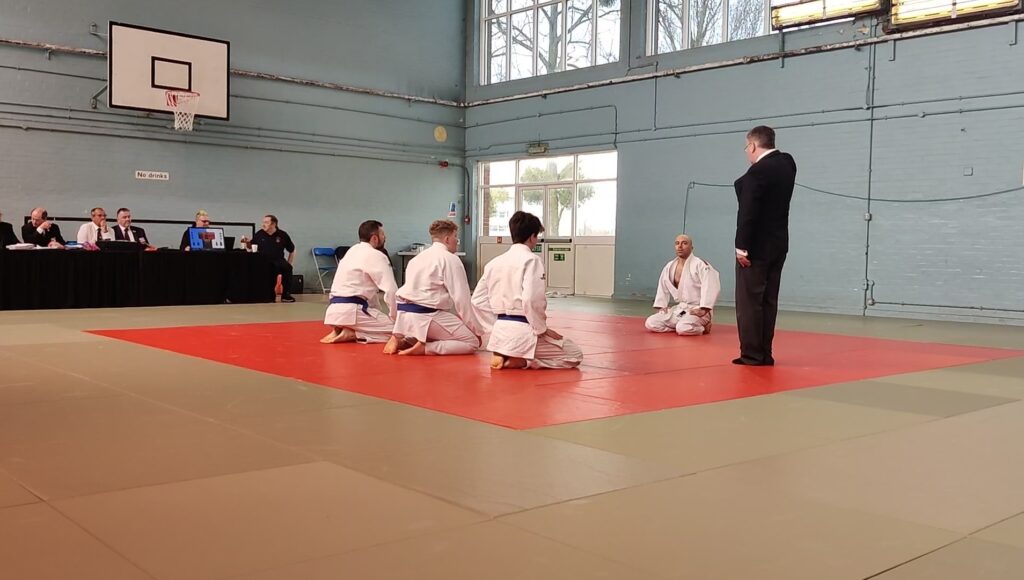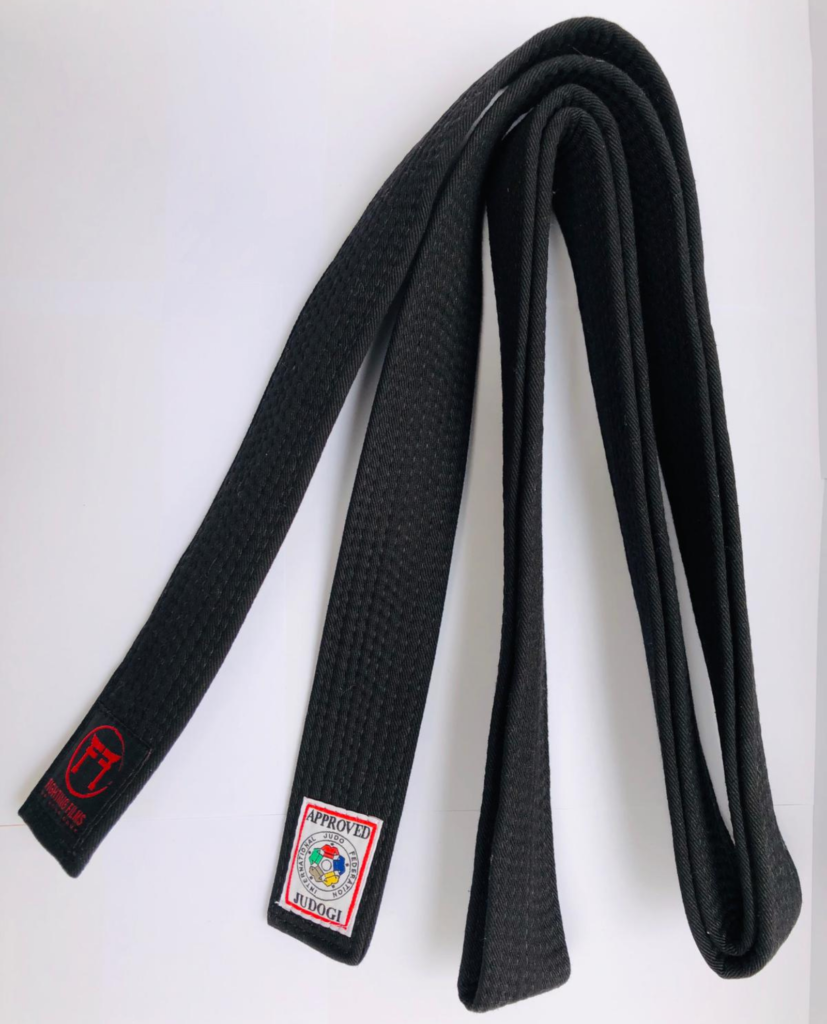
After a little over a month as a 1st kyu/brown belt in Judo I decided to sign up for a black belt grading. I’ll take you through my experiences of it which will hopefully help prepare you if you’re going down this route.
How kyu grading progression works
In the British Judo curriculum initially there’s an emphasis on progression within your club; specific techniques are set out for attainment at each belt level and it’s up to you within your club to learn them.
Your coach will guide you along the way and typically you’ll cover off more than just the techniques for your next belt level. Exposure to a wider variety of Judo techniques is actually a good thing, as you’ll formulate a stronger grounding.
When the time comes, your coach then invites you to ‘grade’. Depending on the club, there may be an expectation that you’ll have taken part in a competition (known as shiai) or two by that stage. Competition is the only place you can really develop applied judo, it’s where you develop a greater understanding of the technique and separate yourself from a mere “theorist”.
On the one hand it’s important to not jump into competitions too early, as you’ll end up just trying to muscle through and rely on aggression, perseverance and sheer grit. These are useful traits to have but as a regularly improving judo player you really want to bring up your technical understanding so you can see (and enjoy) the game for what it is.
As an older player, I used to be somewhat negative about regular randori and shiai since I put myself at higher risk of injury; I’m no stranger to surgery as frequent readers will attest. I have actually trained at places where randori was fairly minimal too. The downside (and a fairly big one) is that the less randori experience you have, the slower your judo development will take. I may not like the fact that I have a couple of crooked and gammy toes, that I can no longer apply to become a hand model (!) and that my knee clicks a little too regularly… However I do like the fact that I have a deeper feel for the sport than just by drilling throws and setups. Regular randori in particular will also develop an off-the-scale level of fitness that cannot be reproduced in any other fitness environment.
After a few years of routinely plugging away at it you will reach brown belt, and that’s when there’s a competitive expectation for candidates to either:
a) win 10 fights in a competition environment (these can accumulate over the course of gradings and/or competitions).
b) attending a black belt grading and winning your line-up.
It’s at this point where you can suss the players who’ve had limited randori and competition experience and those who haven’t. To those that haven’t had the competition experience it’s a sobering experience!
This article covers the black belt grading line-up as I experienced it one fine day in late February 2024. It’s worth noting that British Judo also offers is a theory-only guide to black belt where you would need a minimum of 5 years in the 1st kyu grade, but I won’t cover that here.
What a Judo black belt grading is like on the day
Think of a poorly maintained sports hall, old mats and even older officials running the event and you’re pretty spot-on. I went to one close to Reading which was as “spit and sawdust” as you get (see photo); it gave off proper Fight Club vibes 🙂 .
“It’s a very quiet atmosphere – no coaching is allowed, no cheering just the players fighting it out. You could hear a pin drop. “
Despite the austere atmosphere, people are very friendly! They’ll clap if you exhibit good technique, they’ll compliment you regardless of how you went, the pleasantness is ironic given the circumstances.
1st dan gradings are usually well-attended, so you’ll usually have lots of people with a similar weight to fight against. You want this. You don’t want to be at a grading in the arse end of nowhere as a light or middle-weight with only super heavies to contend against. I noticed a wide range of younger chaps and I’m fairly confident that I was probably the second oldest in the room (there was another chap fighting for a higher dan who appeared older).
How it works
You get a chance of two fights (not one after the other). If you win those, you get invited to fight in what’s called “a line-up”. However, let’s say you lose one of your initial fights, you may be offered a third fight and if successfully winning two out of the three fights you get the line-up invitation.
My first fight was with a chap slightly younger than me, with a weak lapel grip. I had some success with multiple sumi gaeshis. My second adversary was a young fellow who submitted to my juji-gatame that was wrenched on after a formidable fight.
The Line Up!
After everyone had their 1st, 2nd and 3rd fights the candidates for line-up were called up. I was the second invitee in the list; this meant I was called up, bowed to three other players and had to proceed to fight all three in succession.
At this point I would have presumed I’d be full of nerves. I had an entire sports hall watching the spectacle of me trying to defeat three opponents. My opponents were the same grade and VERY keen on winning their fights given this was an opportunity for them to rack up their points for their own black belt.
Oddly I was very calm with the whole thing; I’d had decent sleep the previous week, I’d had a week’s rest from training a little over a week previously. Earlier in the day I’d had conversations with other attendees who mentioned this wasn’t their first grading they’d attended so I was comforted thinking that if I didn’t succeed this time I’d eventually succeed one way or another. What also helped was on the drive to the grading venue I was listening to a French electro band called Air on repeat. There’s a lot to be said about listening to calming music rather than rock when you want to generate creative solutions to problems faced in real time particularly without adrenalin getting in the way.
It was mandatory to win all three fights, so I had to dispense with them pretty quickly (you also have a maximum of 3 minutes for each fight). My first guy was stiff, defending relatively well but had no ground game plan. I found a juji-gatame opportunity and went for it, I cranked it on slowly and his other hand started fluttering just as the ‘bite’ was engaged. The referee called it from there. He then protested that he didn’t tap! If I didn’t have two other adversaries to contend with I would have happily agreed to a rematch.. In JiuJitsu circles this is referred to as a ‘Brazilian Tap’ where you do a light, non-committal tap so the other person stops; if the opponent stops then the Brazilian Tapper pretends like the tap and keeps on going like nothing happened. If the opponent doesn’t stop, Mr Brazilian tapper complains that he tapped and the fight should have ended.
Fight #2 was with a young 16 year old at 90kg. I tried a kata guruma which he promptly dispelled and we ended up on the floor. Despite his coach/dad telling him discretely on the side-lines to “Get up!” he didn’t and I held him down for the ippon to count.
Fight #3 was with a taller gentleman. Long limbs, long reach. He tried a foot sweep once on my lead leg which failed. He tried a second and I countered with a tsubama gaeshi which felled him and secured me a wazari score. From there it was a case of working through his defences and holding him down. The bell rang when the hold-down timing was up and I felt some relief -not elation- that the trial was over and I had secured my victory!
Some thoughts
I used to think that by the time I reached brown belt (1st kyu) I’d have a clear-cut game plan all laid out. I’d be honing that and it would be my go-to. Wrong! I’m still not there yet – I’m confident in my newaza, my gripping is ok, my sumi gaeshi is ok but the set pieces just aren’t there. I raised this with my coach and his son Dan popped up and said he’s still exploring different styles and techniques. To put this into perspective, Dan may not have hit his twenties but he’s a British Judo top 25 seeded player. If Dan says anything Judo-related I listen.
I also used to presume that I wouldn’t get better unless I was very particular about my training, very focussed and deliberate about which techniques I’d be training on any given night. Over time I’ve come to realise that regardless of how optimised your training schedule is, you will get better with more mat time by default, especially randori experience. A lot of what Judo relies on is a ‘feel’ for things:
- A feel for how you should move.
- How your opponent might or might not move
- What happens if you get caught in a certain situation etc.
- Regular exposure to difficult situations
The remainder stages

There are three criteria to be met for official progression to black belt:
- The competitive element (which is this black belt grading line-up or 10 match ippon wins).
- A theory test.
- Six months spent in grade as a 1st kyu.
There’s a youtube video which covers the theory test quite well. I’ve been told that while it’s challenging on the day, you’d need to be having a really bad day to fail. Particularly for 1st dan where the points accumulation on the test is slightly less strict that higher dan grades.
I hope this was helpful for you. Feel free to reach out if you have any thoughts.